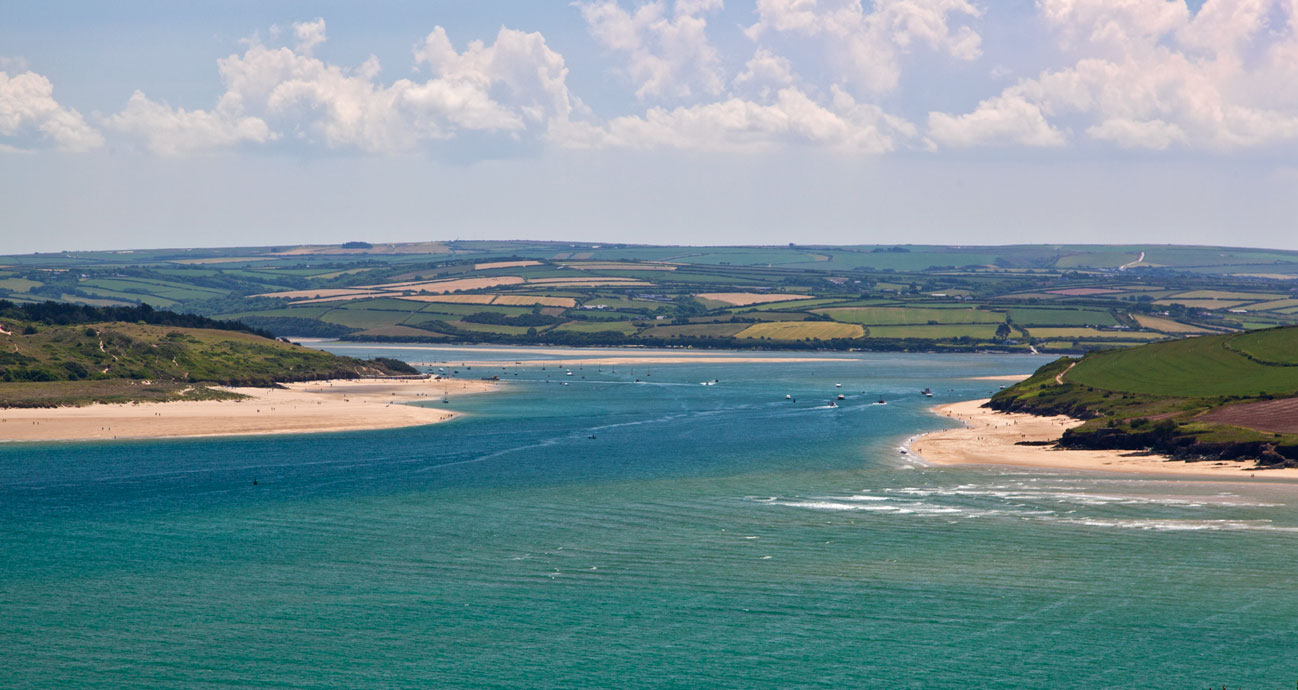Tucked inside the Camel Estuary, popular Padstow is a smart little harbour town. It balances a working fishing fleet with being a top visitor destination, famous as a high-end foodie hotspot.
Padstow was already a bustling little port of fishermen and boat-builders in the time of Elizabeth 1st. Today, the local fisherman supply the many fish restaurants, which have recently become a major feature of the town.
The River Camel is the only sheltered estuary between Hayle in West Cornwall and Devon. Positioned in a small valley on the more sheltered westerly side of the river, Padstow became a thriving fishing port and later trading port.
Padstow’s growth accelerated during the 16th and 17th centuries. This was partly due to the development of the harbour, with the construction of the first stone pier in 1536. The growth of the mining and quarrying industry in the area established Padstow as a major port town. Copper ore was shipped to Bristol and slates exported, many from the Delabole slate quarry a few miles inland.
During the 19th century, the port flourished with the pilchard industry at its height. Shipbuilding became a major industry, with six working shipyards in Padstow at one point.
The railway brought tourism to Padstow in 1899. The Atlantic Express ran a regular service between London and Padstow. Since then the town has never looked back and although the fishing industry still survives, there is little doubt what Padstow’s main industry is these days.
Today, Padstow’s harbour is also filled with pleasure boats of all descriptions. There is a regular ferry across the river to Rock (a.k.a. “Little Chelsea / Chelsea-upon-Sea”). When asked what the best thing is about Rock, a true Padstow local will reply, “The view!”.
In 1827, the Padstow lifeboat station was established, and with good cause. At the mouth of the Camel Estuary is the infamous Doom Bar, a treacherous sandbank that’s caused over 600 shipwrecks since records began (around 200 years ago).
It’s said that the Doom Bar is the result of a mermaid’s curse. The story goes that there was once a merry mermaid who watched over the vessels that went in and out of Padstow. One day, she was shot by a sailor on a visiting boat. The mermaid’s curse was that the harbour would become desolate from that time on. Shortly after a great storm came, wrecking many of the ships in harbour and throwing up the sandbank.
The Camel Estuary
The Camel Estuary (from kemmel, meaning crooked) enters the Celtic Sea at Padstow Bay, and as well as the notorious Bar, there are some lovely, sandy beaches near its mouth. The River Camel begins 30 miles away on Bodmin Moor, and flows through beautiful countryside before widening into an estuary.

Padstein
Padstow has become synonymous with Rick Stein and his seafood restaurants – it is hard to talk of one without mentioning the other. The local view of the celebrity chef’s effect on the town is mixed: Padstow is certainly on the map and has a flourishing foodie tourism trade; however, property prices in the small town have rocketed.
